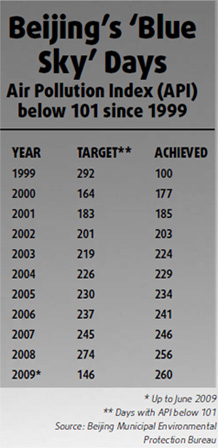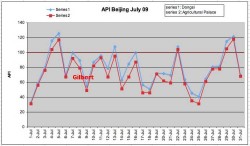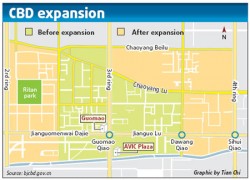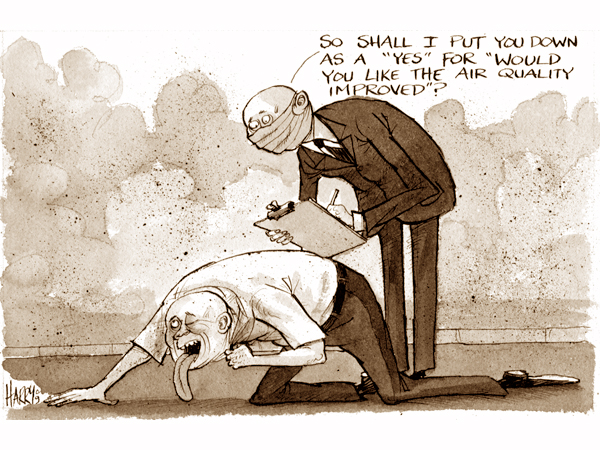Overall the pollution levels in Beijing remain way too high with the very high levels of PM2.5 – not reported by the BEPB who continues to brainwash us with their blue sky days propaganda.
But contrary to many foreign media reports, Beijing (and China) are taking the environmental mess quite seriously and a lot has been achieved. Here some more positive notes.
China planted two trees for every citizen in the past year
New York/Nairobi, 21 September 2009 – The global public’s desire to see action on climate change was clearly spotlighted today with the announcement that the Billion Tree Campaign has reached 7 billion trees – one for every person on the planet.
Over the past three years millions of people ranging from scouts to presidents and from schoolchildren to city dwellers and corporate heads have been rolling up their sleeves and getting their hands dirty for the environment through tree planting.
Today’s milestone was reached with the news that the Government of China has planted 2.6 billion trees as part of this unique campaign, bringing the total to 7.3 billion trees planted in 167 countries worldwide.
Jia Zhibang, Director of the State Forestry Administration, said China aimed to raise its forest coverage rate from 18% to 20% by 2010 and to 26% by 2050. “Planting trees is the best that China can do to contribute to the fight against climate change,” he added.
Advances in Beijing to combat pollution:
– Introduction of new-car emissions standards to the level of Euro IV
– Massive investments are in the pipeline to introduce hybrid cars and elctric cars.
– More than 4,100 of the 20,000 city buses run on CNG or LPG, the largest such fleet in the world.
– By 2015, the city aims to be running 18 lines stretching 561 km, while the number of passengers will hit 10 million a day, the authority said.
– The oldest, dirtiest automobiles, called “yellow-label” cars, after the sticker glued to their windshields, are banned from the center city.
– In the past years Beijing has converted 60,000 boilers and commercial heaters to run on natural gas instead of coal.
– The city’s four coal-fired power plants have installed state-of-the-art pollution scrubbers.
– Nearly 2,900 gas stations and petroleum storage tanks have been equipped with recycling controls.
– Hundreds of heavily polluting factories have been moved from central Beijing, including a coking coal plant and the huge steel mill that is scheduled to depart by the end of 2010, the unit of the Shougang Group, China’s fourth largest steelmaker; with its move to neighboring Hebei Province, 65,000 Beijing workers will lose their jobs.
While many look at China, the situation in India is not much better. 45% of its geographical area suffers from some form of land degradation; 3 million deaths per year attributed to air pollution; almost 70% of its surface water is contaminated. India with 17% of the global population accounts for 5.3% of global carbon emissions. The USA (under 5% of world population) accounts for more than 20% of the emissions.
Pollution
New sites on air quality
Thanks to Michael Wester I discovered this site:
http://www.amfic.eu/index.php
And their “air quality bulletin” – you can select Location, etc.
http://www.amfic.eu/bulletin/index.php
Seems they have terrific information on air quality. I will need to keep a close eye.
Another one I will explore further but looks interesting:
http://www.myhealthbeijing.com (by Richard Saint Cyr)
I will need to study those and fine-tune my overviews on Beijing pollution.
The farce of blue skies
Beijing continues to force feed us with their blue-sky lies. Unfortunately some naïve foreigners fall for it. “Official” API figures for the city are often by miracle just up to 100. U.S. AQI Twitter figures are on the average 2 to 2.5 higher. Recently we had several days with AQI between 400 and 500. But Beijing remains proud with its cooked-up figures that demonstrate the air is continuously getting better. Some Chinese specialists (says China Daily) now dare to suggest some “improvements” for the measurements like taking into account PM2.5, ozone, etc.
The usual argument that the Twitter readings are “high because done in a high traffic area” is total nonsense, served with a straight face. What about their measurements in Dongsi and Agricultural Palace?
Keep on coughing! Or buy a good air filter (made in USA or Switzerland).
Some said the air was so good during the visit of president Obama because “the Chinese did something”. No you blockheads, say thanks to the cold wind that blew away all the s###. We did have some fabulous good days – now over again.
The crap I have to hear from some “well informed foreigners” is sometimes pathetic.
I still need to update my charts for the past months but don’t feel the urgency – it’s all artificial. Except if I use Twitter but their figures are not 7/7 nor 24/24. Guess those guys need a break to wash down the dust with some Tsingtao Beer.
blue skies or not?
Beijing continues to force-feed us with their blue sky propaganda. For sure some foreigners will fall for it, especially after the really blue looking skies we had a couple of days ago.
Now, the pollution is coming back with a revenge and BEPB has to admit we are over API 100.
That is all misleading. When earlier this week we had gorgeous blue sky the situation was in fact not so good. AQI as per our Twitter friends showed values of close to or higher than 200 – unhealthy. The PM2.5 are dangerous because if there are no other major particles the sky looks great. We have the same problem in Belgium where often the sky looks great but not the PM2.5.
When pollution hit later in the week we reached AQI of 450 – HAZARDOUS, avoid going outside and any physical activity.
BEPB reported figures like API 120. As a rule you multiply the API by 3 to have some representative AQI.
I am looking to leave Beijing again this Wednesday, hopefully to breathe better air.
API overview for July 2009
edit /update 2 August 09
So, here comes the big obfuscation of the truth. The official API figures as from our BEPB who proudly can say there were soooo many blue sky days in Beijing.
Some naïve foreigners (CNN lazy journalists included) swallow it all, look in amazement at the blue sky. Funny, haven’t seen actually much sky and neither the buildings around me. The air has been very bad for many days as confirmed by the U.S. Twitter data. Those average AQI 180 roughly (“unhealthy”) but with peaks of over 400 and one of 500 (HAZARDOUS). Of course BEPB is not any time soon going to measure PM2.5. Too embarrassing.
According to BEPB, up to now we had in Beijing 172 days of “blue sky” (API lower or equal to 100). The goal for 2009 is 260 days (71%). Looks like they will have their gold medal of misleading this year.
Obviously the BEPB loses all credibility. So, for some time I will stop recording their data as it is a waste of time.
Yes, you dummies, the Twitter stuff is in a bad area, called CBD. Oops, see the attached official ENLARGED CBD area that is still a taxi ride far from the embassy. And Dongsi is overall worse.
Not to wonder parents have to make a tough choice – raise their kids in this hazardous environment or head back home where they might not have a job.
Sounds like Chinese migrants working in hazardous factories where they end up with irreversible lung damage. According to China Daily, nearly 640,000 people suffer from pneumoconiosis in China today.
Then to say our “compatriots” in Hongkong worry about their “bad” air. Probably much better than here. They now also push to measure PM2.5.



